The 12 Best Pet Birds
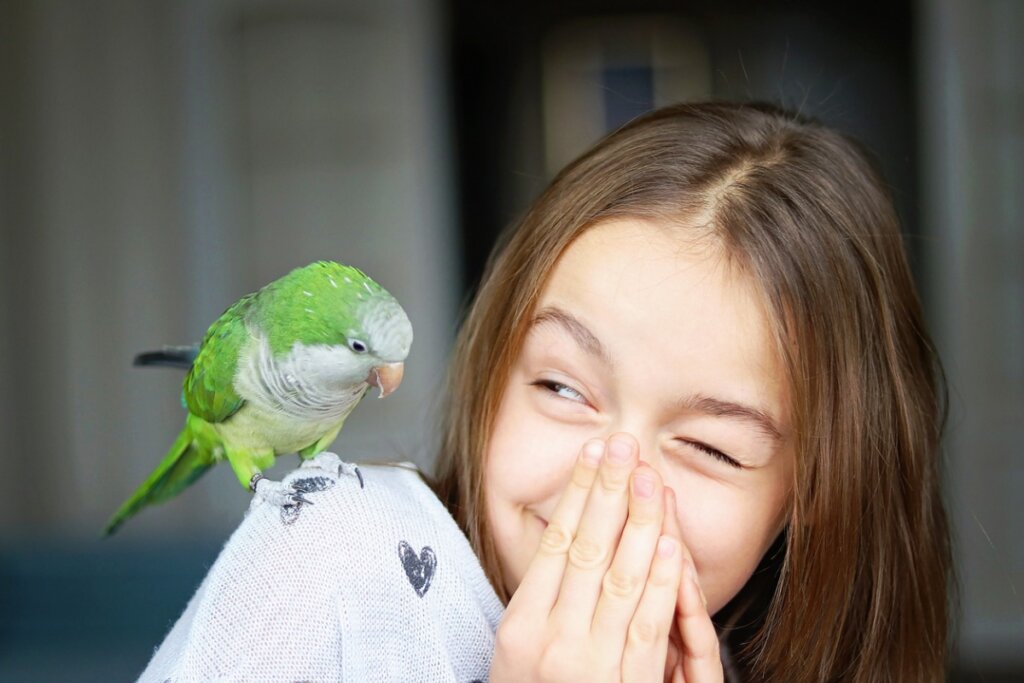
Apart from dogs and cats, birds are the most common pets in homes. If you want to know which are the best pet birds, here’s a list of the favorites among bird owners.
Now, just because they’re in demand as pets doesn’t mean they’re easy to care for. Many of these birds live for decades and looking after them requires expert hands. However, that doesn’t mean you can’t enjoy these birds’ wonderful qualities, so don’t miss it!
1. Parakeets (or budgies)
These are one of the most popular pet birds. Their small size, coupled with their incredible intelligence, make these small psittacines an endless source of enjoyment. Parakeets measure about 15-18 centimeters (6 to 7 inches) and are gregarious birds that need the company of fellow parakeets, but also form strong bonds with their owners.
These birds have a life expectancy of about 12 years. During that time, it’s important to take the utmost care of their diet and mental health, as these are the two fundamental points that will prevent most visits to the veterinarian. They require daily attention, regular check-ups at the vet, and lots of environmental enrichment.
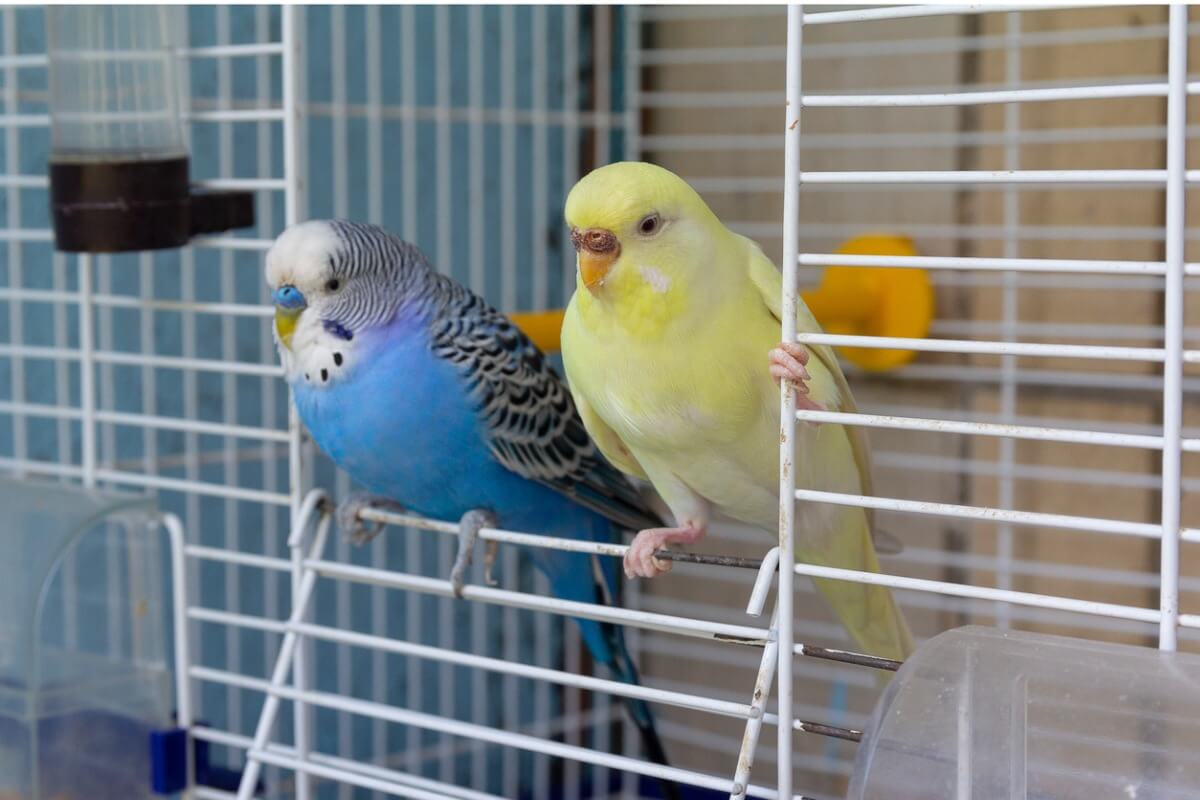
2. Canaries
Canaries once became popular as “decorative” animals because of their colorful plumage and beautiful singing. Today, fortunately, there’s more awareness about their care and they’re looked after better, making them one of the best pet birds you could get.
They’re shy birds that measure about 13 centimeters (just over 5 inches) and live for about 10 years under proper care. If your canary feels at ease and trusts you, they’ll trill every time you pass by (if it’s a male).
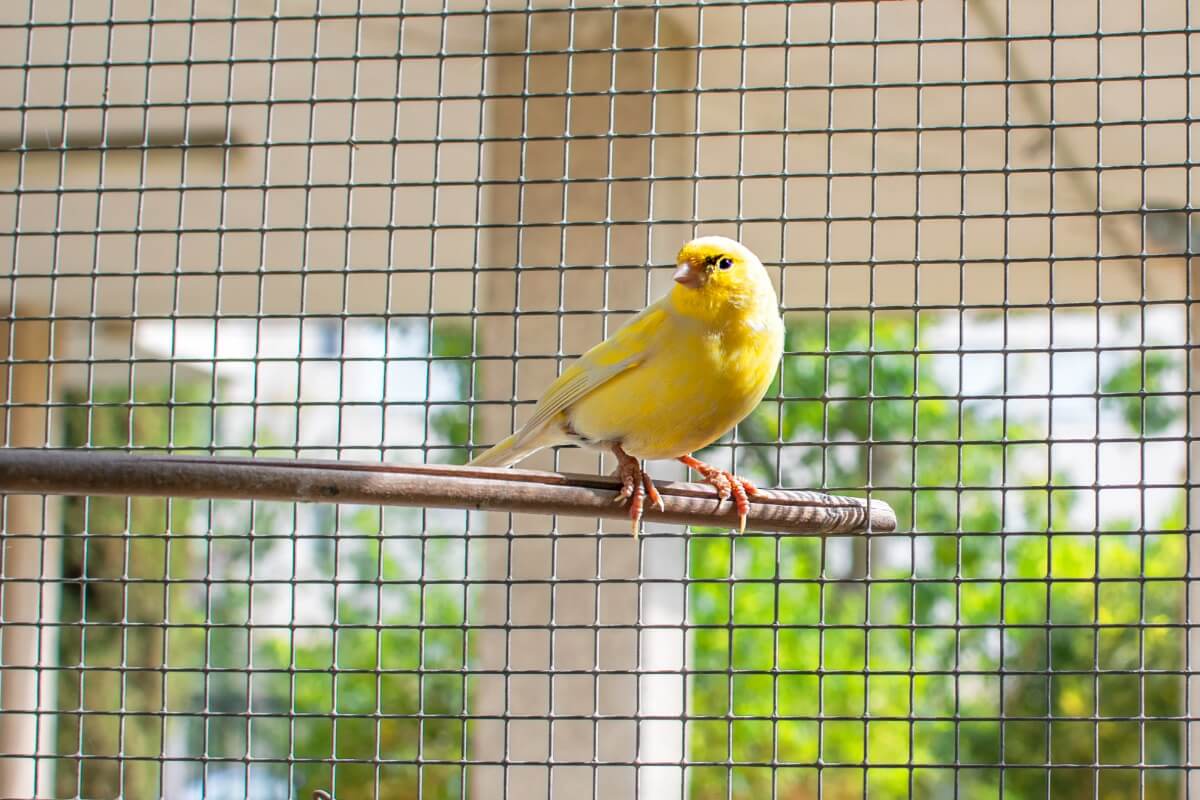
3. Diamond doves
Also famous for their colorfulness, these birds need the company of others of their species to avoid falling into depressive states. They love to bathe, so they certainly enjoy having their own birdbath inside the cage.
They have high energy levels, so they should be taken out daily to fly and interact with their owners. They’re very shy, but with patience and perseverance you’re certain to get them to feel at ease near you.
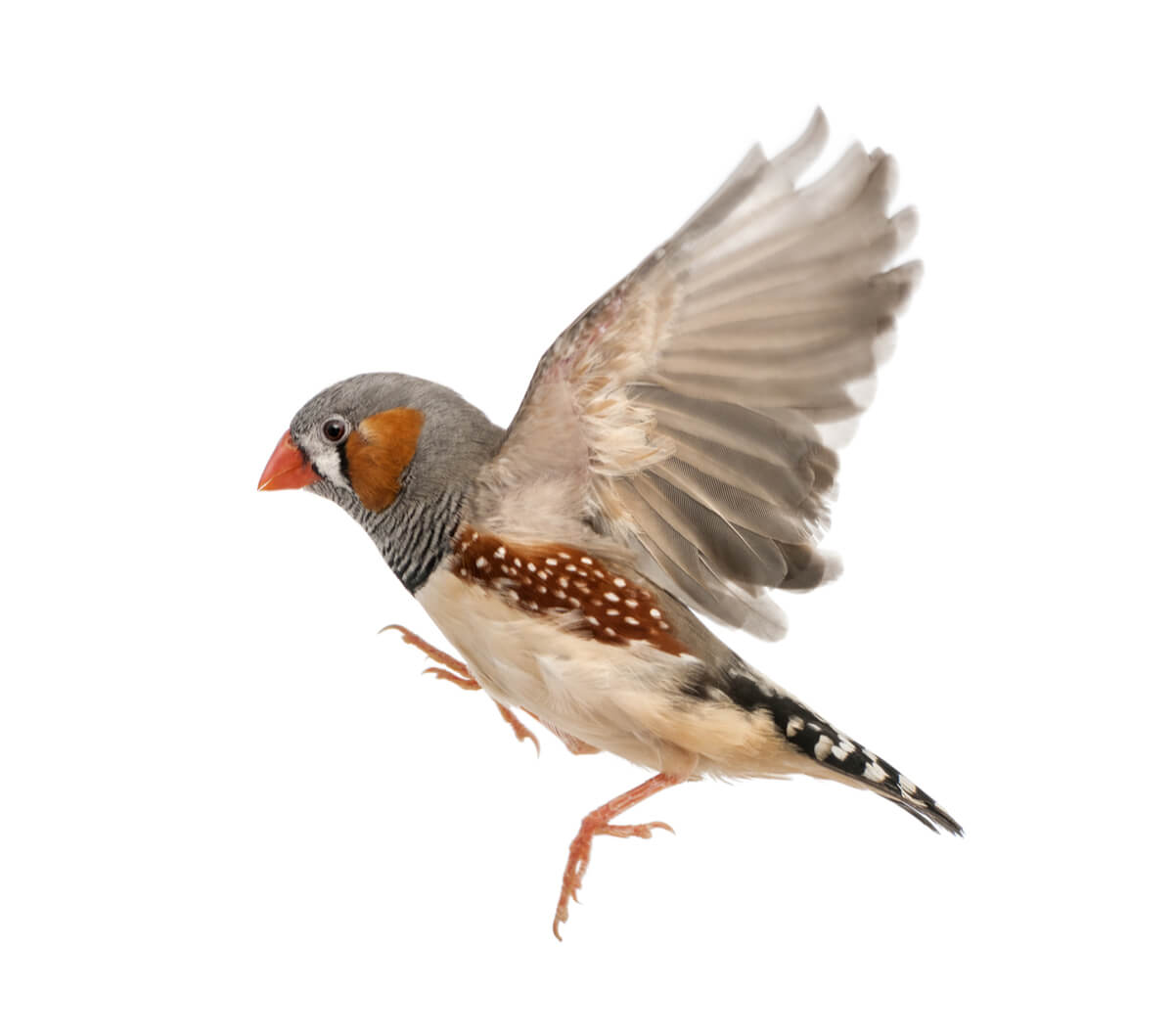
4. Goldfinches
These small birds surprise us with the intensity of their song which is in great contrast to their small size, as they don’t exceed 12 centimeters (hardly 5 inches) in length. They have colorful plumage with a beautiful contrast between black, yellow, and red.
They also have a lot of energy to expend, so don’t hesitate to give them plenty of chances to keep active. If this way, you’ll gain their trust, and this is a great way to save them from behavioral disorders. You should also ensure these birds aren’t kept in cold, drafty places, as they can easily become ill.
In some places, keeping goldfinches is forbidden, as they’re considered wild birds. Make sure you find out before you acquire one.
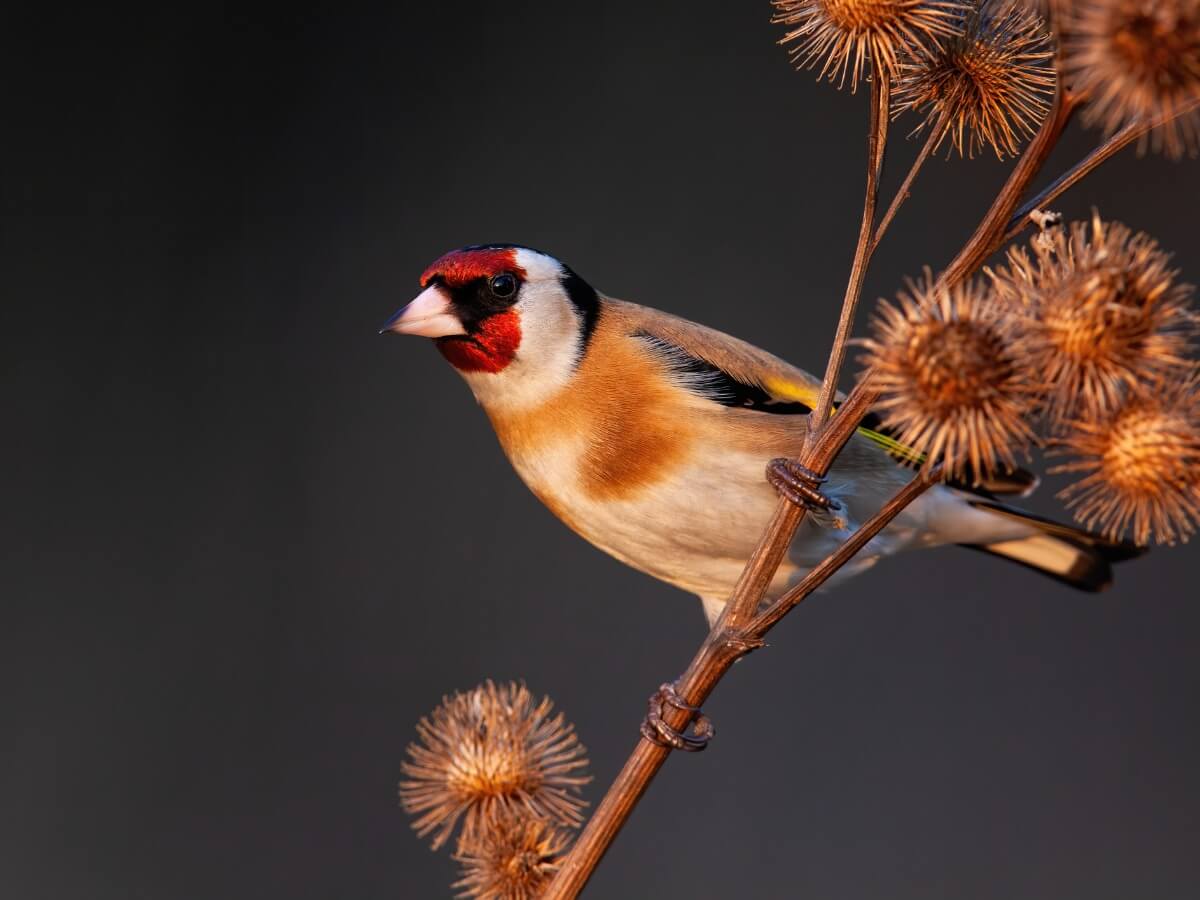
5. Lovebirds
These small psittacines are called lovebirds because they form stable pairs for life and suffer a lot from loneliness. The company you can give them is never enough, even if you spend a lot of time with them. They must always be accompanied by a partner.
There’s a great variety of coloration in these birds, but their original plumage is green and red. It’s a good idea to try to teach them to socialize correctly, because their pecks are very painful. They’re used to feeding on fruits, and they tend to twist their beak as they peck in order to extract the juice.
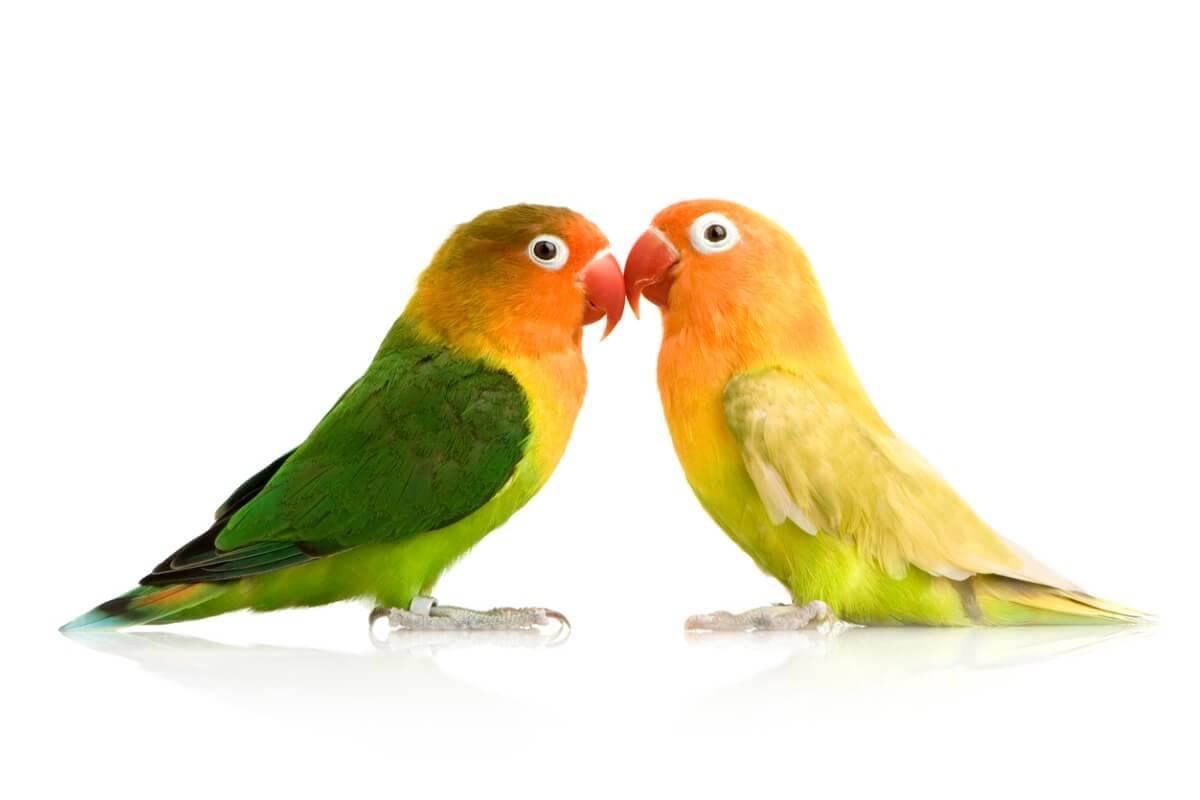
6. Nymphs
Their good reputation is well deserved, because nymphs are among the best pet birds you could find. Like any exotic bird, they have very specific care needs, and their training isn’t for beginners. However, it’s worth the time you invest in them; we just suggest that you find out a lot about them before you adopt one.
Nymphs are approximately 35 centimeters long (14 inches) and a life expectancy of about 15 years.
These psittacines enjoy socializing with both humans and other birds. That’s why they need to go out every day, exercise, and receive a lot of environmental enrichment, because they’re very intelligent birds.
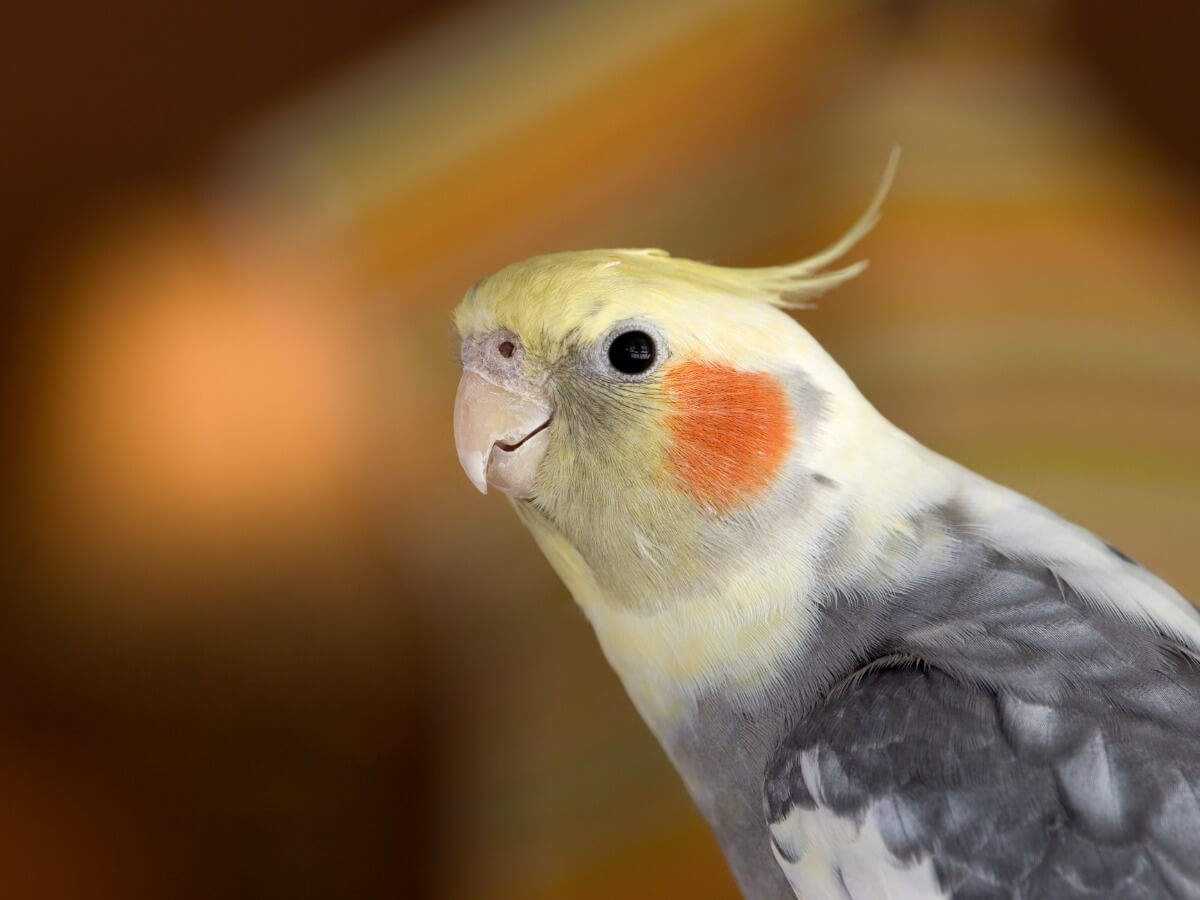
7. Grey parrot
This psittacine from Africa is well known for its great ability to mimic human speech. In addition, it has an intelligence equivalent to that of a 5-year-old child and, if well cared for, it can reach 80 years of age without a problem.
They’re birds that create a strong bond with their caregiver, and are a lifelong companion. They belong to Appendix I of CITES, so their possession requires regulated documentation. Before acquiring one, be very well informed to avoid incurring fines for illegal possession.
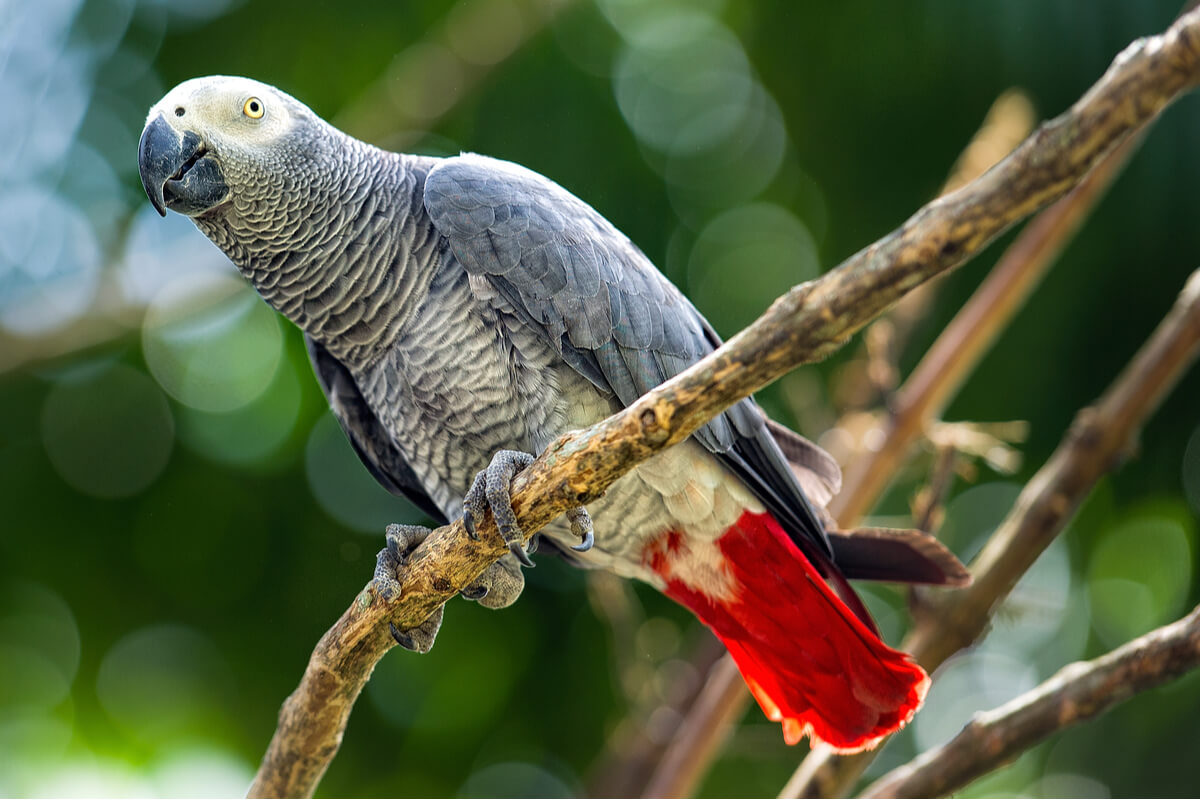
8. Cockatoo
This is another psittacine that will require much of your time. Just like the grey parrot, these birds are intelligent and have quite complex personalities, so their interaction with you will be full of nuances and moments of surprise.
Just like the grey parrot, these psittacines are quite long-lived and can easily reach 15-25 years of age, with a maximum of more than 30 years.
There are several species of cockatoo, but the most common in homes is the white cockatoo (Cacatua alba), thanks to its impressive crest and snowy plumage. Mind you, they’re noisy birds, so think twice before adopting one. They’re also on CITES Appendix I.
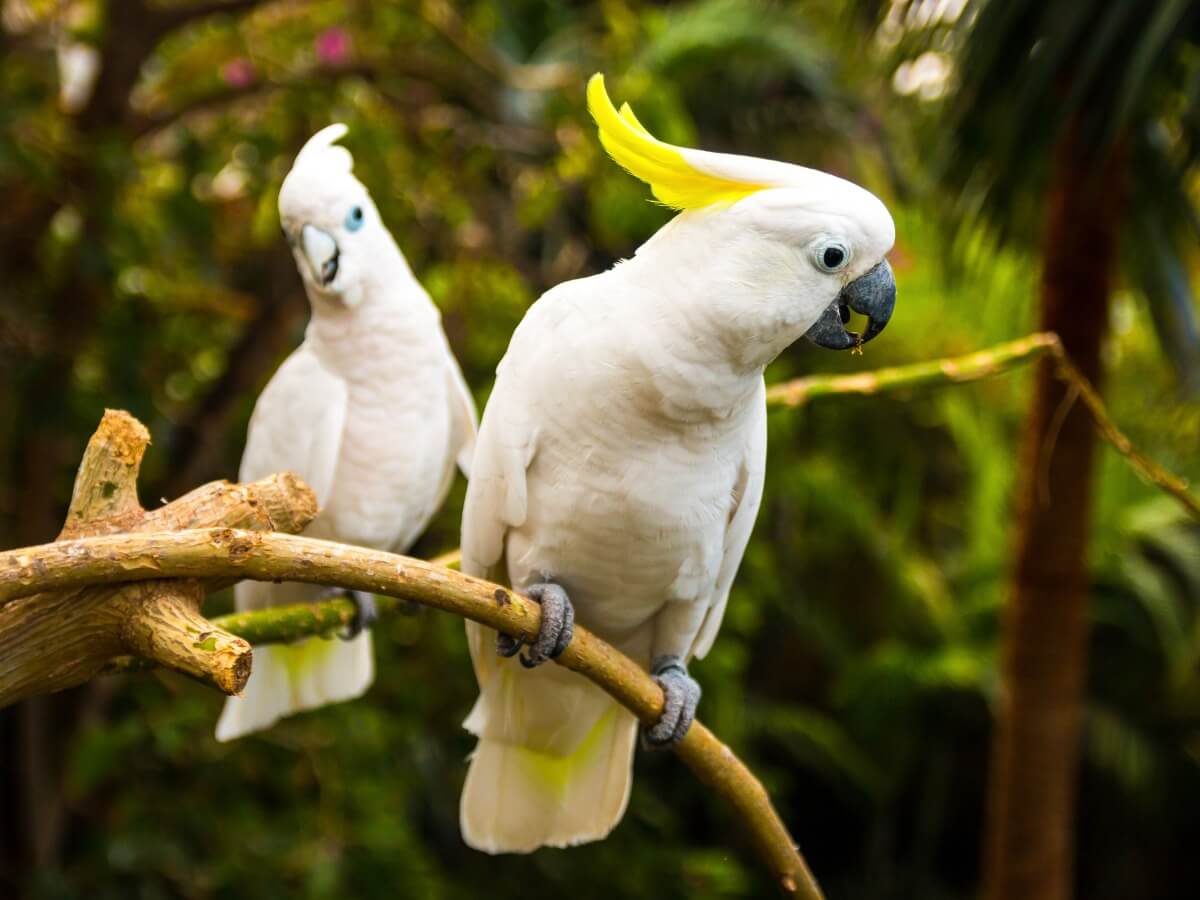
9. Parrots
It’s very important to research these birds well before taking ones into your home, as some species, such as the Monk parakeet (Myiopsitta monachus), have been introduced in some countries and have become an invasive species – owning one is illegal in these countries. Acquiring one of these birds could be a criminal offense and could worsen their impact on the environment.
That said, parrots make excellent companion birds, although they require a lot of time and dedication. They have a great facility for reproducing speech and are quite noisy. They also tend to have a rebellious temperament, so they require constant training based on positive reinforcement.
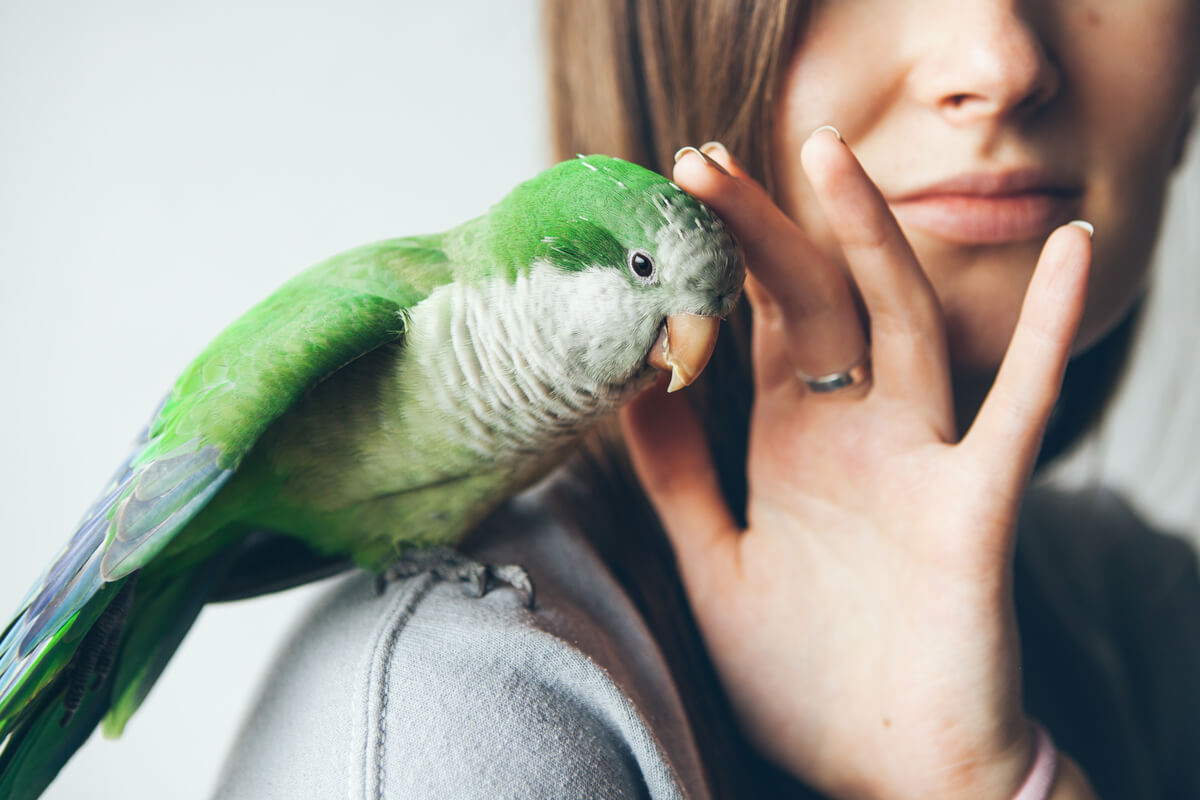
10. Macaws
These are large psittacines with a body length of almost half a meter (1.5 feet). Like their relatives, they’re sociable, create solid and lasting bonds and learn very quickly. As you can imagine, they have strict care requirements.
Captive keeping also requires specific documentation, as is the case with the other large psittacines described in this article. In addition, their life expectancy is about 70 years, so think very carefully before starting the procedures.
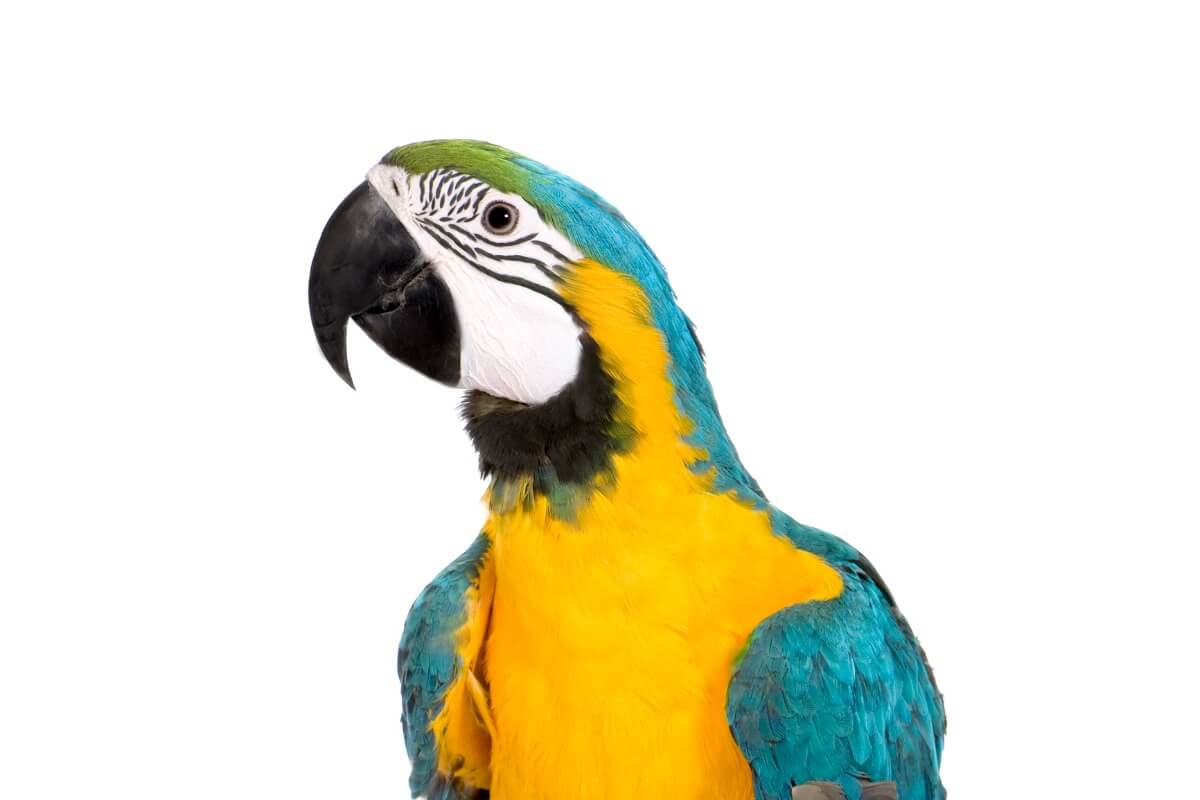
11. Eclectus parrots
Not as well known as the previous ones, Eclectus parrots are medium-sized psittacines of about 34 centimeters (11 inches), who also live very long. They can live up to 60 years without a problem. Their character is quieter and less noisy than the rest of the members of this list, but they’re just as intelligent and sociable.
Among the exotic birds, eclectus parrots may be one of the best pet birds around for experienced owners. Remember that they need a lot of attention, enrichment, and a good diet in order to live a healthy and happy life.
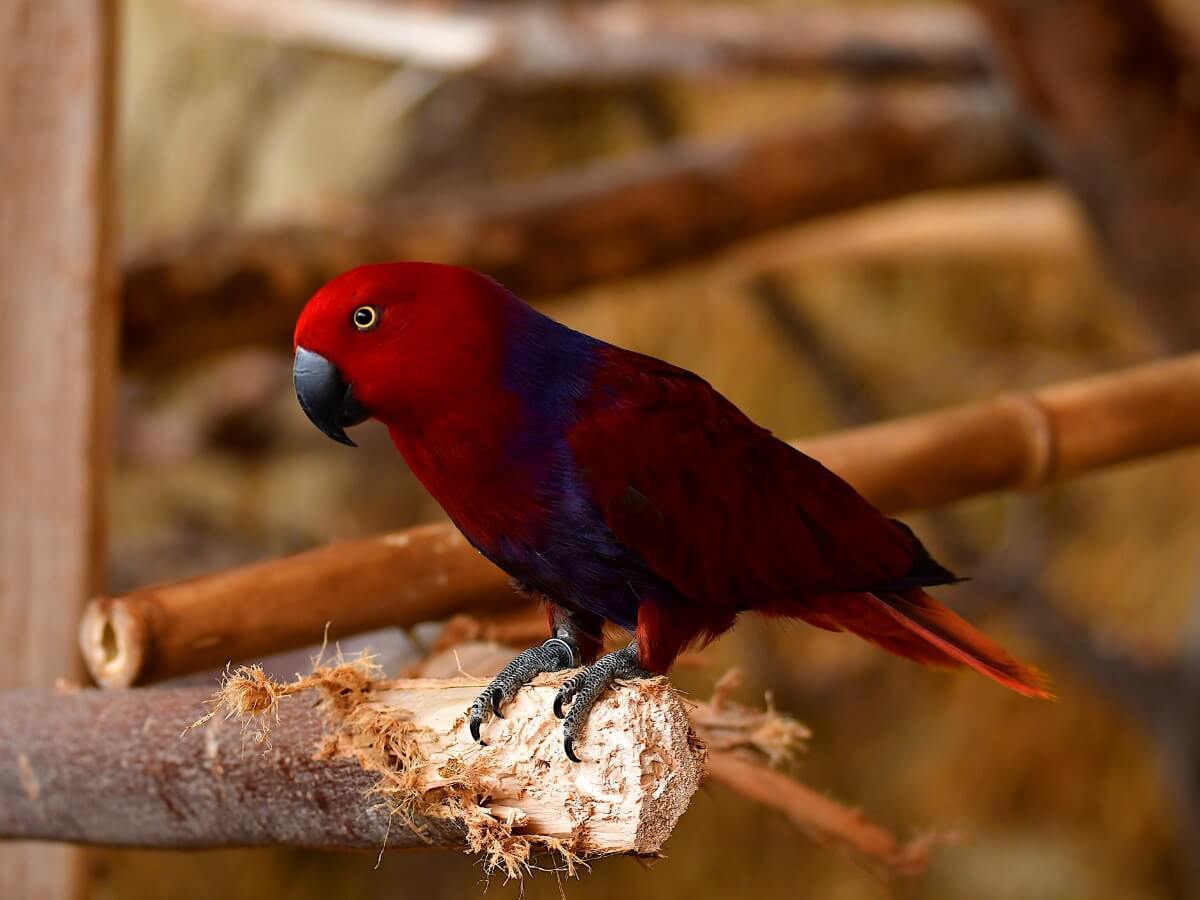
12. Hens
Are you surprised to see this bird on a list dominated by parrots or their relatives? Well, hens are intelligent, sociable birds that are easy to care for, even in an apartment. As with any exotic bird, owners will need to acquire a lot of information to keep them in optimal health, but they’re certainly easier birds to keep than psittacines.
They have been stereotyped as dirty, dumb, or unpleasant birds. But if you adopt a hen and give them a dignified life in your home, you’ll be able to confirm that they’re one of the best pet birds you could wish for.
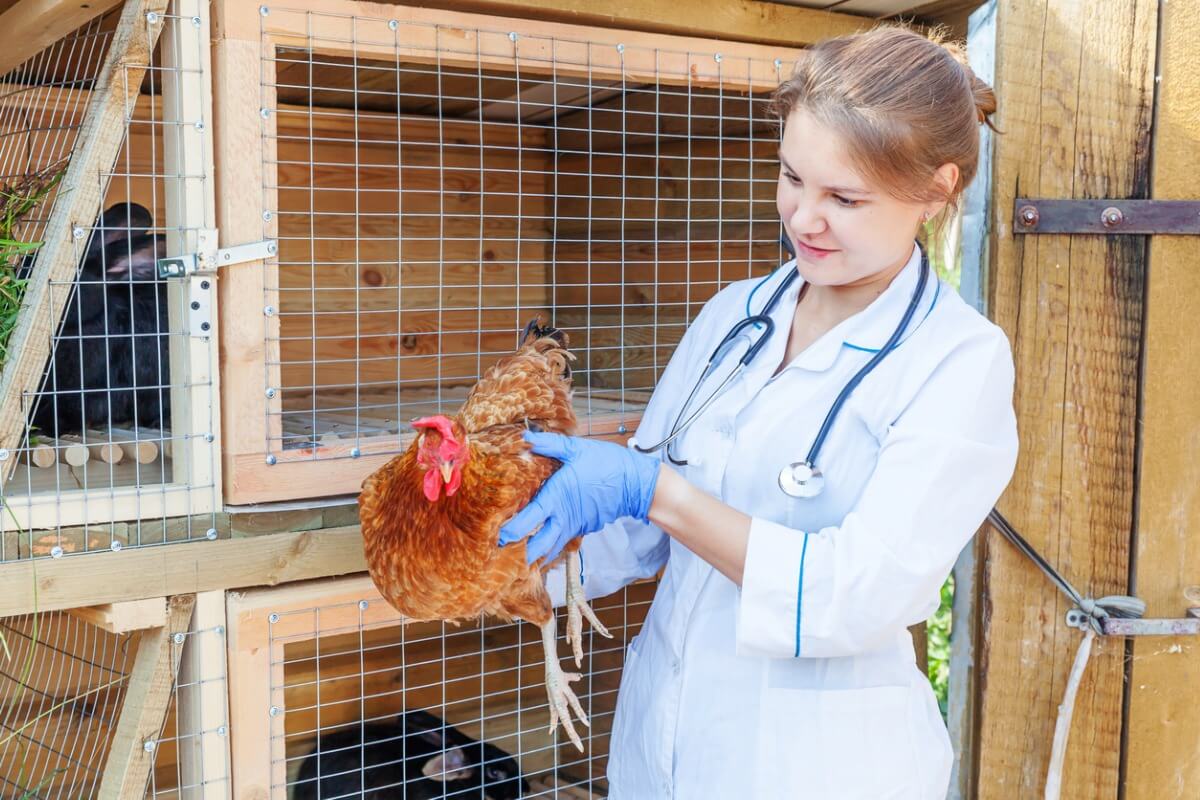
It’s important to realize that birds tend to hide any symptoms of discomfort or illness. So, don’t just assume they’re OK; don’t miss your regular check-ups with the veterinarian. Fortunately, little by little, people who take birds in are much more knowledgeable than they were a few years ago. Let’s work to keep it that way.
All cited sources were thoroughly reviewed by our team to ensure their quality, reliability, currency, and validity. The bibliography of this article was considered reliable and of academic or scientific accuracy.
- The Open Sanctuary Project, Inc. (2021b, octubre 13). Sharing Your Home With Chickens. The Open Sanctuary Project. Recuperado 5 de enero de 2022, de https://opensanctuary.org/article/indoorchickens/
- SEO/BirdLife. (2019, 13 febrero). Cotorra argentina. Recuperado 5 de enero de 2022, de https://seo.org/ave/cotorra-argentina/